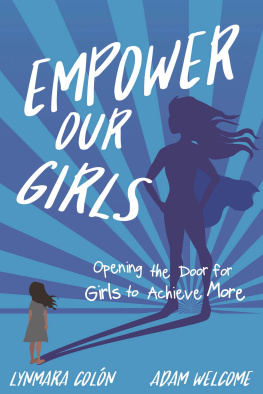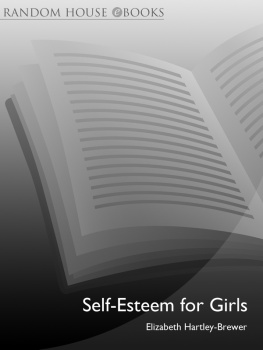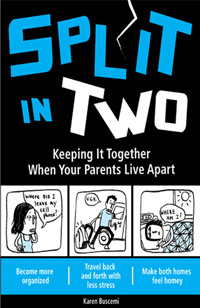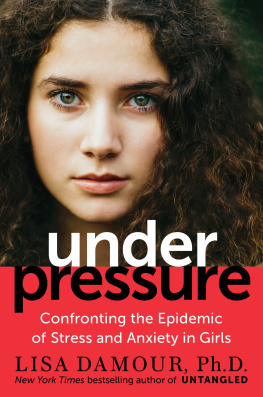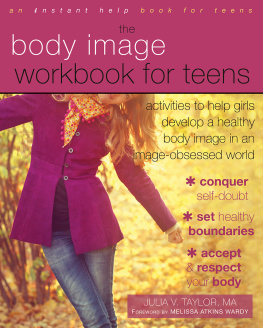girls
without limits
Dedication
Susan Jones Sears, PhD
19402012
You saw potential in me that I did not see in myself. Thank you
for paving the way for an entire generation of women
and girls. You were a trailblazer, a teacher,
a mentor, and friend.
I miss you.
girls
without limits
helping girls achieve healthy relationships,
academic success, and interpersonal strength
lisa hinkelman


FOR INFORMATION
Corwin
A SAGE Company
2455 Teller Road
Thousand Oaks, California 91320
(800) 2339936
www.corwin.com
SAGE Publications Ltd.
1 Olivers Yard
55 City Road
London, EC1Y 1SP
United Kingdom
SAGE Publications India Pvt. Ltd.
B 1/I 1 Mohan Cooperative Industrial Area
Mathura Road, New Delhi 110 044
India
SAGE Publications Asia-Pacific Pte. Ltd.
3 Church Street
#10-04 Samsung Hub
Singapore 049483
Acquisitions Editor: Jessica Allan
Associate Editor: Julie Nemer
Editorial Assistant: Lisa Whitney
Production Editor: Amy Schroller
Copy Editor: Kimberly Hill
Typesetter: Hurix Systems Private Ltd.
Proofreader: Eleni-Maria Georgiou
Indexer: Maria Sosnowski
Cover Designer: Gail Buschman
Permissions Editor: Karen Ehrmann
Copyright 2013 by Lisa Hinkelman
All rights reserved. When forms and sample documents are included, their use is authorized only by educators, local school sites, and/or noncommercial or nonprofit entities that have purchased the book. Except for that usage, no part of this book may be reproduced or utilized in any form or by any means, electronic or mechanical, including photocopying, recording, or by any information storage and retrieval system, without permission in writing from the publisher.
Printed in the United States of America
A catalog record of this book is available from the Library of Congress.
ISBN 9781452241210
This book is printed on acid-free paper.
13 14 15 16 17 10 9 8 7 6 5 4 3 2 1
Contents
Preface
A s I began to think about how best to study and work with girls, I was not sure where to start, nor was I sure where this research would lead me. I poured through scholarly research articles, books, and newspaper stories directed toward issues facing girls. I attended conferences and professional development trainings where counselors, psychologists, and educators discussed the girl crisis. Strategies were offered to increase the self-esteem of girls, expose girls to more diverse careers, and encourage girls to be anything that they wanted to be. But I quickly realized that the best starting place was to actually talk to girls and really listen to what they had to say! I wanted to understand what is going on in girls lives, in their own words. I wanted to understand why the adolescent years feel so tumultuous and lonely for girls and why they consistently report feeling that they arent quite good enough.
The research in this book took place over a period of nearly eight years. My research team and I have surveyed and interviewed thousands of girls from different backgrounds, ethnicities, socioeconomic statuses, and ages. We have talked with girls who are incarcerated, who are homeless, who live in middle-class homes, and who live in mansions. We learned from girls who are in two-parent families, foster care, single-parent families, divorced families, and who live with their grandparents. We spent time listening to girls in very poor urban schools, middle-class suburban schools, elite independent schools, and low-income rural schools. Girls in public, parochial, private, and charter schools participated in our research and shared their thoughts, feelings, and opinions with us. We provided them with a safe place to talk, and did not pass judgment. We just listened.
What we learned is that there are vast differences among girls in regards to their experiences, their thoughts, and their opinions. Girls knowledge of various topics is based upon the environment where they are raised. Depending upon what they have been exposed to, girls perceptions of the opportunities available to them can vary greatly. But the one thing that continued to amaze me as I talked with more and more girls was that the fundamental issues that are facing girls are much more universal than they are different. While girls can have extremely different experiences based upon their socioeconomic status, race and ethnicity, family composition, or ability, I have found that the experience of girlhood, while unique for every girl, looks amazingly similar for girls across the country. Despite the vast differences between and among girls, the commonalities and shared experiences strongly outweigh the differences. Negotiating friendships and fitting in, experiencing insecurity about ones body, managing dating relationships and sexual pressure, and dealing with the social, emotional, and cognitive changes of adolescence seem to be universal issues for many American teen girls. Girls are under pressure and are at-risk for negative outcomes simply because they are female. Girls are more likely than boys to: dislike their body, be on a diet, feel pressure to look sexy, experience sexual violence, have low self-esteem, experience depression, and attempt suicide.
Despite these challenges, we know that girls are strong and resilient. They consistently exceed the limited expectations that are placed upon them by society and the media and they continue to amaze and inspire us. We also know that girls are better able to fully realize their potential when they have caring adults in their lives who nurture, challenge, encourage, and support them.
My goal in writing this book is to give a voice to girls who often feel that their thoughts and opinions are unheard and devalued. There are so many professionals, psychologists, teachers, and authors who have been telling us what girls want, what girls need, and what we should do with the girls in our lives, but few have taken the time to survey and talk to thousands of girls from many backgrounds. I wanted to know: Whats going through girls minds? What do they dream about? What fills them with insecurity? What do they think are the big things going on in their lives that adults dont understand? And ultimately, what can we do to help them? I want to provide adults with a glimpse into the lives of girls, as described by the girls themselves, and offer concrete strategies for how adults can better understand, communicate with, and motivate the girls in their lives.
I recognize that this book does not address the unique issues that face every girl. For example, our research did not directly address some of the social, emotional, and developmental issues that face girlssuch as sexual orientation and gender identity, spirituality, specific developmental or learning issues, drug and alcohol use and abuse, nor pregnancy and teen parenting. However, it does offer a perspective on the shared experiences of girls, and the ways that, because of their gender, all girls can experience limitations and decreased expectations in life.
Our role as caring adults in the lives of girls is to understand these challenges and equip girls with the skills to effectively navigate their adolescent years and construct a life that is full of purpose, meaning, pride, and fulfillment. We want girls to perceive their options as infinite and their abilities as expandable, and we each have a role in helping girls construct a life without limits.
Next page

